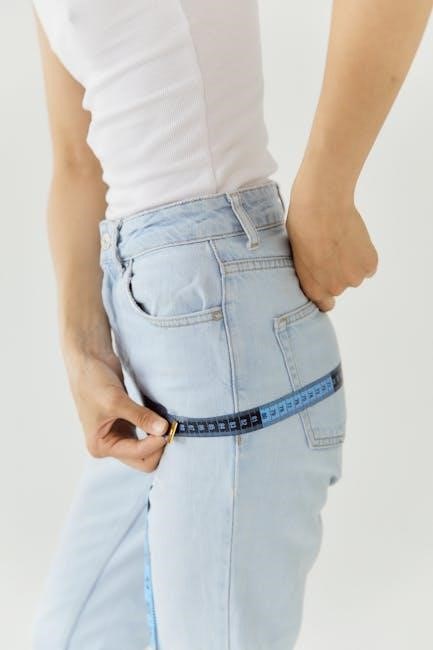Medela flange sizes are designed to ensure a comfortable and efficient pumping experience. Proper fit is crucial for milk expression and prevents discomfort or nipple injury. Available in various sizes, Medela offers options to suit individual needs, ensuring optimal comfort and milk output. Incorrect sizing can lead to pain, reduced milk supply, and clogged ducts, making accurate measurement essential.
1.1 Importance of Proper Flange Fit
A proper flange fit is essential for comfortable and efficient pumping. It ensures effective milk expression while preventing nipple discomfort, pain, or injury. Incorrect sizing can lead to reduced milk output, clogged ducts, and even inhibit milk letdown. A well-fitting flange supports breastfeeding success and overall pumping efficiency, making it a critical factor for nursing mothers using breast pumps.
1.2 Overview of Medela Flange Options
Medela offers a range of flange sizes, including standard options like 21mm, 24mm, 27mm, 30mm, and 36mm, catering to various nipple sizes. The PersonalFit and PersonalFit Flex breast shields provide flexibility and comfort, with sizes from 21mm to 30mm. These options ensure a customized fit, enhancing pumping efficiency and comfort. Proper sizing is crucial for optimal milk expression and preventing discomfort or complications during breastfeeding.

How to Measure Your Nipple Size
Measuring your nipple diameter is essential for proper flange fit. Use a ruler or printable tool to determine size, adding 4mm for the correct Medela flange size. Accurate measurement ensures effective pumping and comfort.
2.1 Step-by-Step Measurement Guide
To measure your nipple size, start by gently compressing it to form a circle. Use a ruler or a printable breast shield size ruler to measure the diameter in millimeters. Ensure the nipple is centered and measure across the widest part. Add 4mm to your measurement to determine the recommended Medela flange size. For example, a 16mm nipple diameter requires a 21mm flange. This method ensures a proper fit for comfortable and efficient pumping. Accurate sizing is crucial to avoid discomfort and optimize milk output.
2.2 Using a Printable Breast Shield Size Ruler
A printable breast shield size ruler is a convenient tool for accurate measurement. Print the ruler, cut out the circles, and place your nipple in the center of each to find the best fit. Measure the widest part of your nipple and add 4mm to determine your Medela flange size. This method ensures a proper fit, optimizing comfort and milk output while preventing discomfort during pumping.

Medela Flange Size Chart
Medela offers flange sizes of 21mm, 24mm, 27mm, 30mm, and 36mm. The chart helps determine the correct size based on nipple diameter, ensuring comfort and efficiency. Proper fit is essential for effective pumping and preventing discomfort.
3;1 Standard Flange Sizes (21mm, 24mm, 27mm, 30mm, 36mm)
Medela offers standard flange sizes of 21mm, 24mm, 27mm, 30mm, and 36mm. The 24mm size is typically included with most pumps. Proper fit ensures comfort and efficient milk expression, while incorrect sizing can cause discomfort or reduce milk output. The size chart helps determine the best fit based on nipple diameter, ensuring optimal pumping performance and preventing issues like clogged ducts or pain. Consult a size chart or lactation consultant for accurate sizing.
3.2 PersonalFit Flex Breast Shield Sizes
Medela PersonalFit Flex breast shields are available in sizes 21mm, 24mm, 27mm, and 30mm. These shields are designed to adapt to your breast shape, enhancing comfort and milk flow. They offer flexibility, allowing for a secure fit without restricting movement. Proper sizing ensures effective pumping and prevents discomfort. Use a size chart or consult a professional to determine the best fit for optimal results and comfort during pumping sessions.

Consequences of Incorrect Flange Size
Incorrect flange sizes can cause pain, discomfort, decreased milk output, and clogged ducts. Proper fit is essential for effective pumping and maintain breast health.
4.1 Pain and Discomfort During Pumping
Pain and discomfort during pumping often result from ill-fitting flanges. If the flange is too tight, it can cause nipple soreness and restrict milk flow. Conversely, a flange that is too loose may lead to inadequate suction, causing irritation. Proper fit is essential to prevent pain and ensure a comfortable pumping experience, which is crucial for maintaining milk supply and overall breastfeeding success.
4.2 Decreased Milk Output and Clogged Ducts
Incorrect flange sizes can lead to decreased milk output and clogged ducts. If the flange is too tight, it may compress milk ducts, restricting flow. Conversely, a flange that is too loose can fail to express milk effectively. Pain from poor fit can also inhibit letdown, further reducing output. Proper flange fit is essential for efficient pumping and maintaining healthy milk production and breast health.

Available Medela Breast Shield Ranges
Medela offers PersonalFit and PersonalFit Flex breast shields in sizes from 21mm to 36mm. These ranges ensure comfort, efficiency, and adaptability for diverse breast shapes and sizes.
5.1 PersonalFit Breast Shields
Medela’s PersonalFit breast shields are designed for comfort and efficiency, available in sizes 21mm to 36mm. They adapt to individual breast shapes, promoting optimal milk flow. Made without BPA, these shields ensure safety and durability. The 24mm size is standard with most pumps, while others can be purchased separately to meet specific needs. Proper fit is essential for effective pumping.
5.2 PersonalFit Flex Breast Shields
Medela’s PersonalFit Flex breast shields offer enhanced flexibility and comfort. Available in sizes 21mm to 30mm, they adapt to breast shape for better fit and increased milk flow. Designed with a 105-degree angle, they promote efficient expression. These shields are durable, BPA-free, and easy to clean, ensuring a safe and effective pumping experience tailored to individual needs and preferences.

Professional Fitting and Consultation
Professional fitting and consultation are crucial for optimal flange fit. Lactation consultants provide expert guidance, while virtual sizing services offer convenient solutions for determining the best breast shield size.
6.1 Role of Lactation Consultants

Lactation consultants play a vital role in ensuring proper flange fit. They assess nipple size, breast shape, and pumping comfort, offering personalized recommendations. Their expertise helps prevent issues like pain or clogged ducts, ensuring efficient milk expression. Consultants can also guide on alternative products, such as BeauGen cushions or silicone inserts, for improved fit, making pumping a seamless experience for mothers.
6.2 Virtual Sizing Services
Virtual sizing services provide convenient access to professional flange sizing guidance. Through photos or video consultations, lactation consultants assess nipple size and breast shape to recommend the best flange fit. This service is ideal for those unable to meet in person, ensuring comfort and efficiency in pumping. It helps address fit issues remotely, promoting optimal milk expression and preventing discomfort or clogged ducts.

Addressing Asymmetry and Different Sizes
Some individuals may have asymmetrical nipple sizes or require different flange sizes for each breast. Measure both breasts separately to ensure proper fit and comfort during pumping.
7.1 Measuring Both Breasts
Measure each breast separately to account for natural asymmetry. Use a ruler or printable guide to determine nipple diameter. Proper sizing ensures a comfortable fit and efficient pumping. Asymmetrical sizes are common, so ordering different flange sizes for each breast is often necessary. This ensures optimal comfort and prevents issues like discomfort or reduced milk output.
7.2 Ordering Different Sizes for Each Breast
Ordering different flange sizes for each breast is essential for optimal comfort and efficiency. Medela offers individual sizes, allowing you to purchase the correct fit for each breast. This ensures proper alignment and prevents issues like discomfort or reduced milk output. Measure each nipple separately and order accordingly to accommodate natural asymmetry. This personalized approach maximizes pumping comfort and effectiveness.

Troubleshooting Common Flange Fit Issues
Common flange fit issues include elastic nipples, improper sizing, and discomfort. Using silicone inserts or BeauGen cushions can help improve fit. Consult a lactation consultant for personalized solutions.
8.1 Elastic Nipples and Silicone Inserts
Elastic nipples can stretch to fit the flange, sometimes reaching the tunnel end. This may cause discomfort or inefficiency. Silicone inserts, like Pumpin Pals or LacTeck BabyMotion flanges, can provide better support and prevent stretching. These inserts adapt to nipple shape, ensuring a secure fit and improving milk flow. They are ideal for users with elastic nipples, offering enhanced comfort and efficiency during pumping sessions.
8.2 Using BeauGen Cushions for Better Fit
BeauGen cushions are a excellent solution for achieving a better flange fit, especially for those between sizes. These cushions reduce the flange size by approximately 2mm, providing a snugger fit and improving comfort. They are particularly beneficial for users with elastic nipples, as they help prevent stretching and ensure proper milk flow. This simple accessory can significantly enhance pumping efficiency and overall comfort.
Proper Medela flange fit is essential for comfortable and efficient pumping. With various sizes available, finding the right fit ensures optimal milk expression and prevents discomfort. Always prioritize accurate measurement and consult professionals if needed for the best pumping experience.
9.1 Summary of Key Points
Proper Medela flange fit ensures comfort, efficient milk expression, and prevents discomfort or injury. Available sizes cater to individual needs, with options like PersonalFit and PersonalFit Flex. Measuring nipple size accurately is crucial, using tools like rulers or consulting lactation experts. Incorrect sizes can cause pain, reduce milk output, or lead to clogged ducts. Prioritizing proper fit enhances overall pumping comfort and efficiency, making it essential for successful breastfeeding journeys.
9.2 Final Tips for Optimal Pumping Comfort and Efficiency
Always ensure proper flange fit and alignment to avoid nipple irritation. Regularly inspect and replace worn-out flanges for optimal performance. Stay hydrated and relax during sessions to enhance milk flow. Adjust pump settings for comfort and efficiency. Consider using supportive accessories like cushions or Lansinoh pads for added comfort. Clean and maintain flanges properly after each use to ensure hygiene and longevity.

